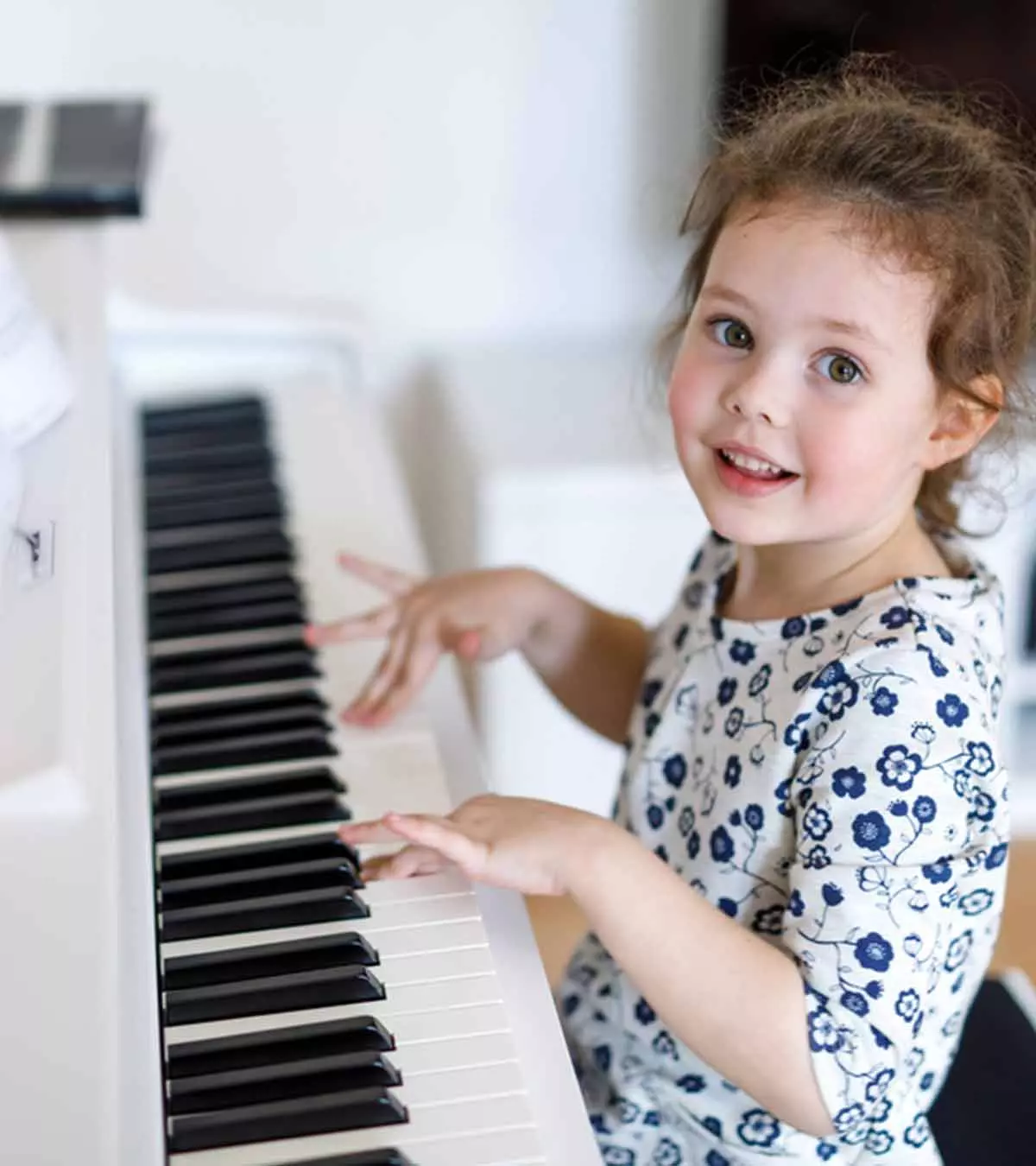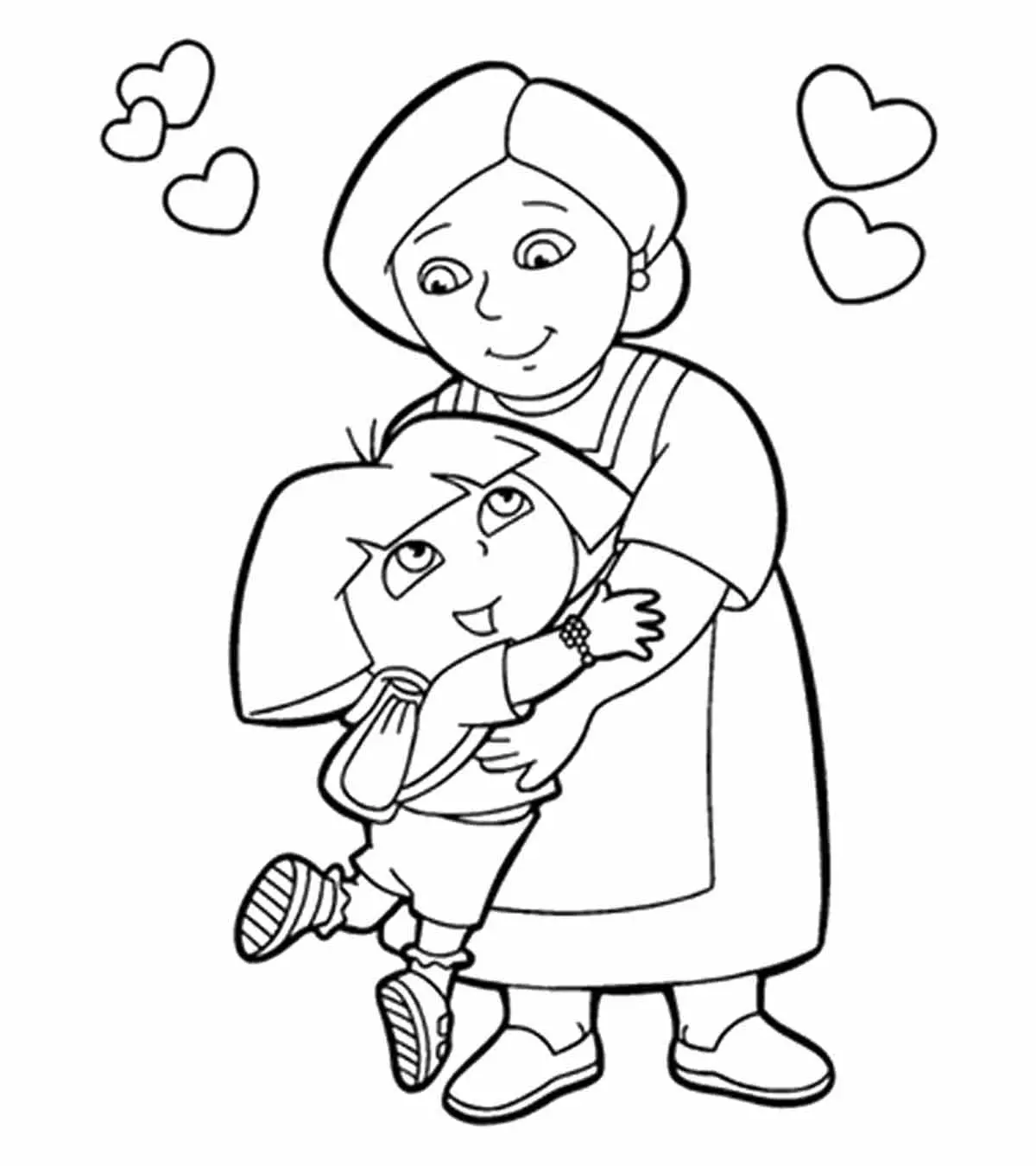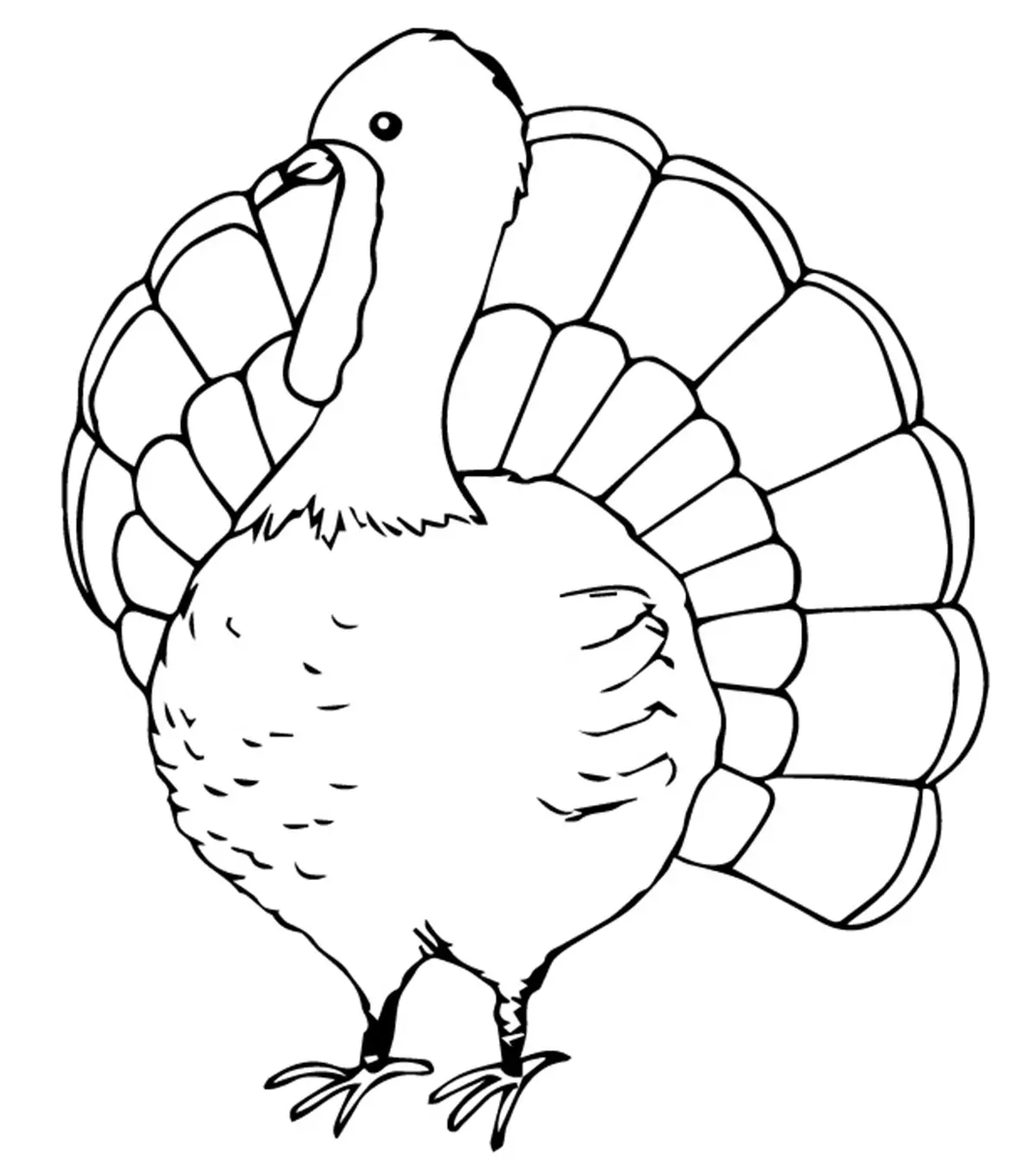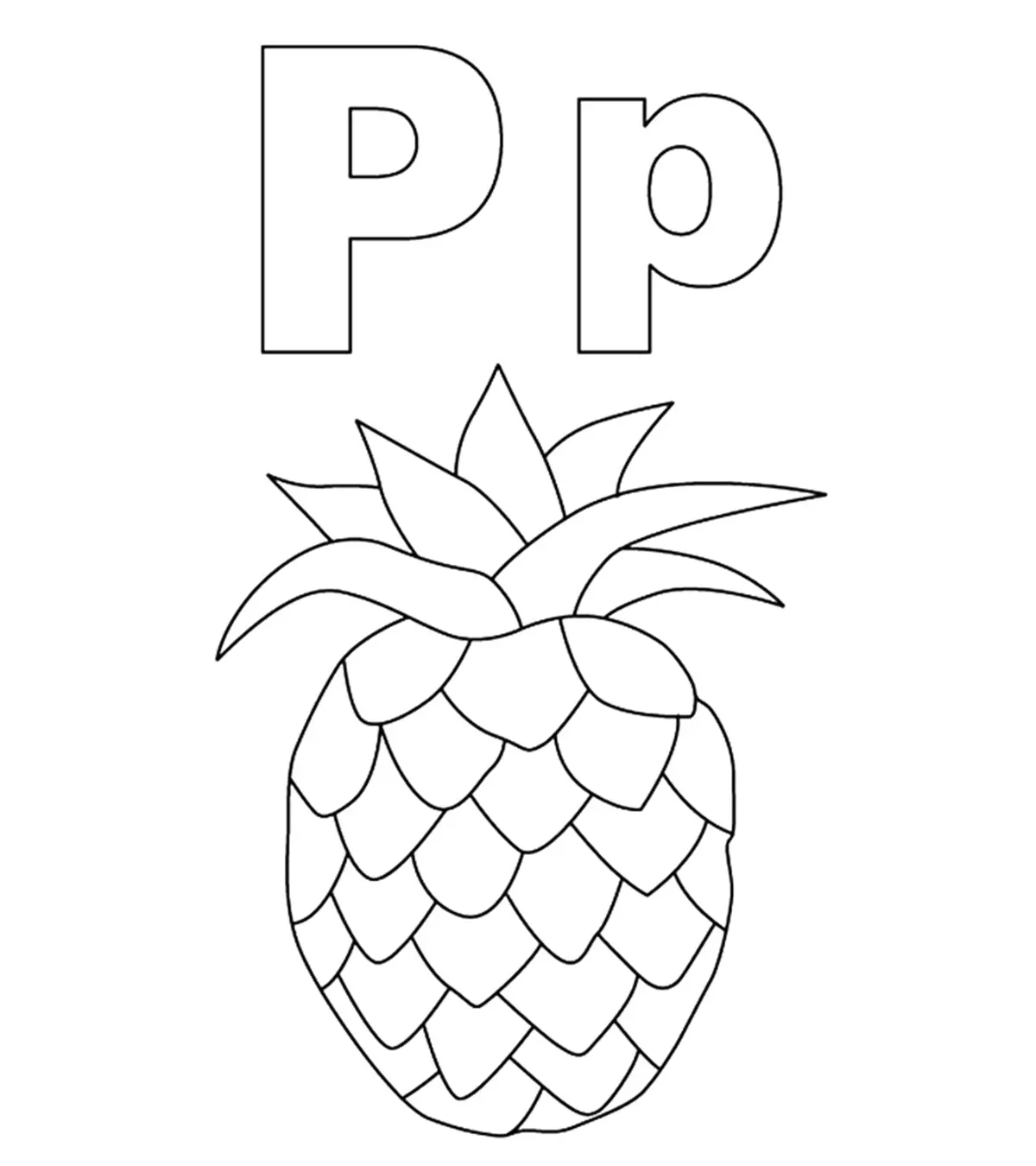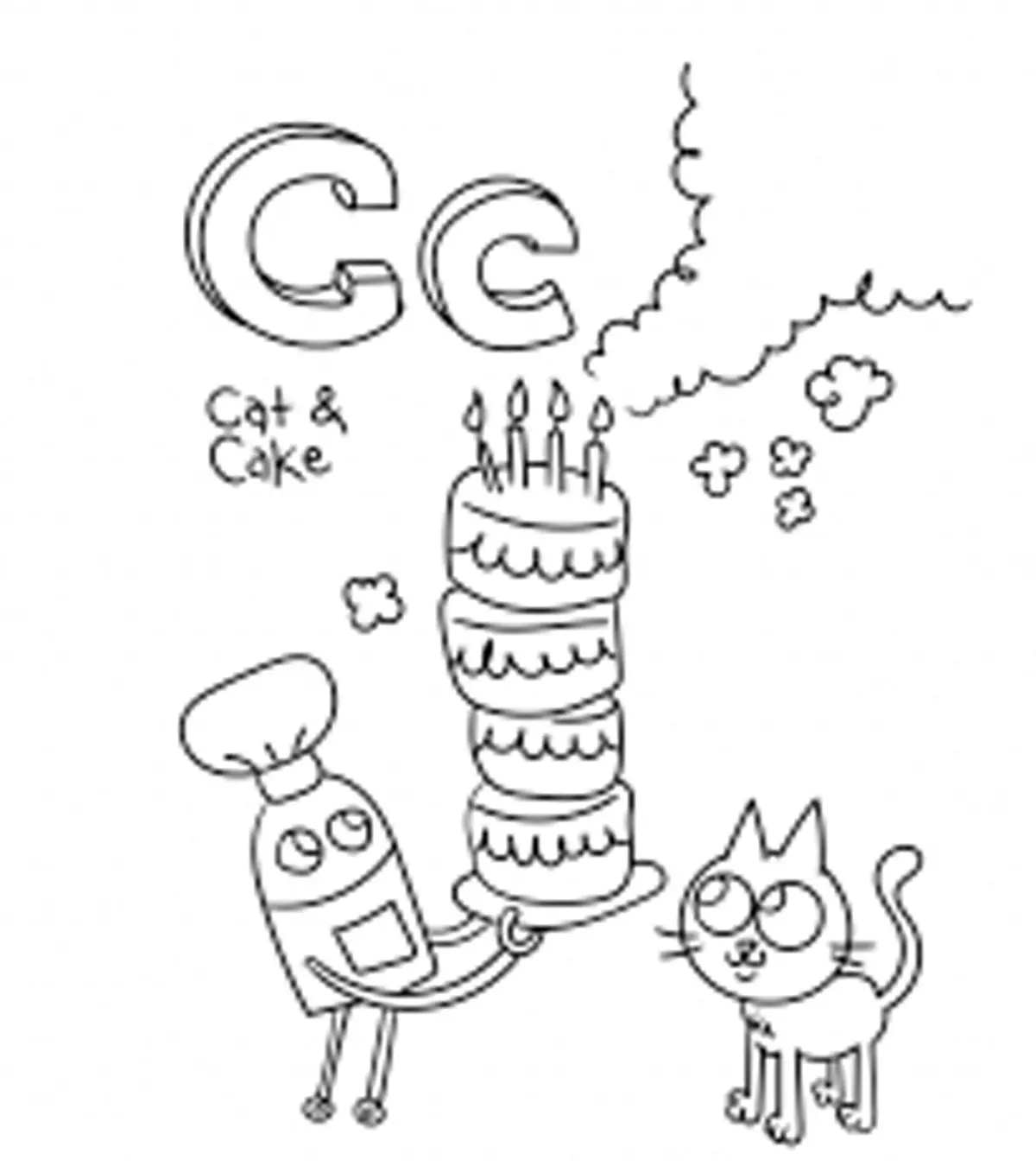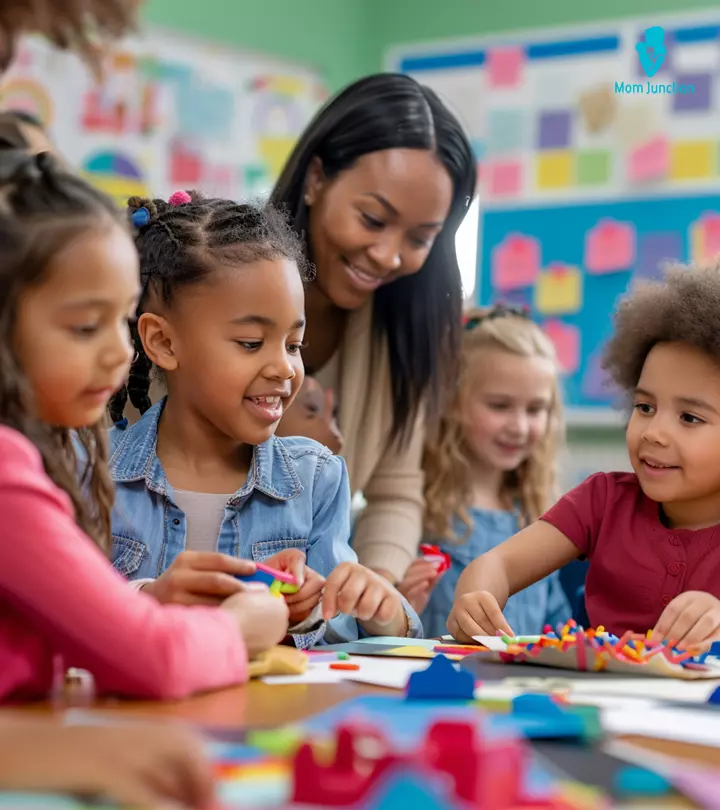
Image: Midjourney/ MomJunction Design Team
Fun classroom games for kids are a great way to keep them engaged and learn creatively. These games not only make lessons enjoyable but also reinforce educational concepts, allowing students to absorb information more effectively while fostering social skills and teamwork. If you have a classroom full of hyper-energetic and mischievous kids, getting them to focus and pay attention is a difficult task. However, introducing them to some fun games may be a creative way to engage them in the lessons and activities and increase their involvement in the learning process.

If you are looking for some games that children will enjoy playing in the classroom while also gaining knowledge, find below our curated list of classroom games that you can use. In addition, some of these games focus on specific improvements in language, art, and memory skills.
Key Pointers
- Classroom games are effective means of promoting social interaction among children.
- Games such as Crazy Train, Bleep, Board Race, and Art Bingo will intrigue children and keep them engaged for a long time.
- You may modify the game rules to better suit your specific circumstances.
- Monitor all the children while they engage in these games to avoid mishaps.
Fun Classroom Activities For Kids
Education and teaching are serious business, but kids just want to have fun. So here are some fun ways to engage in teaching and educational development, and help children learn important skills in an enjoyable way. These activities are designed to accommodate various learning styles, ensuring that every child, whether a visual, auditory, or kinesthetic learner, can participate and benefit.
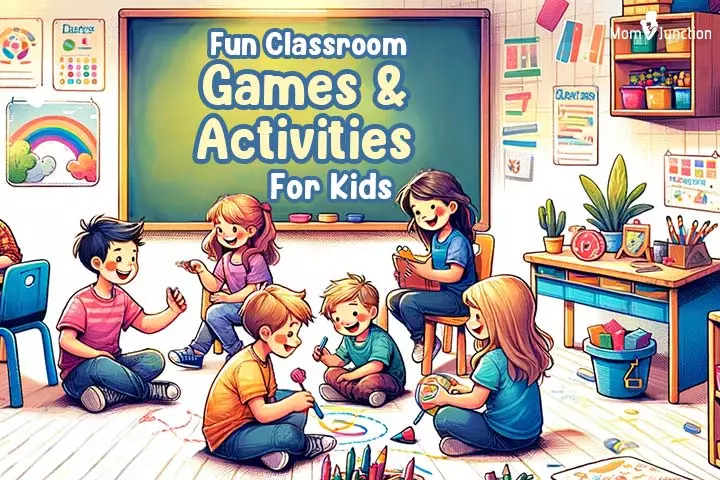
1. Buzz
There’s no buzz word here. Only a buzz number or letter.
Buzz is an excellent interactive game for younger kids who need to recite long lists such as a series of numbers, letters of the alphabet, and days of the month.
Number of players: Ten or more
You will need: A little preparation and concentration.
How to play:
- Pick a series that you want the kids to list out – numbers from one to 100, prime numbers, or any other series of words or numbers they have access to.
- Decide what the buzz word or number is going to be. For instance, you can decide that every fourth number or letter is going to be the buzz word. You could also choose words starting with a specific letter or numbers divisible by a particular number.
- The word ‘buzz’ will replace the figures or letters.
- Get the kids to start reading the items on the list or the series in order, while replacing the chosen letter number with buzz.
For example:
1, 2, 3, buzz, 5, 6, 7, buzz, 9,10,11, buzz…
Anyone who misses replacing the buzz word or number is out of the game.
Infographic: Fun Classroom Activities For Children
Some thing wrong with infographic shortcode. please verify shortcode syntax2. Blind Artist
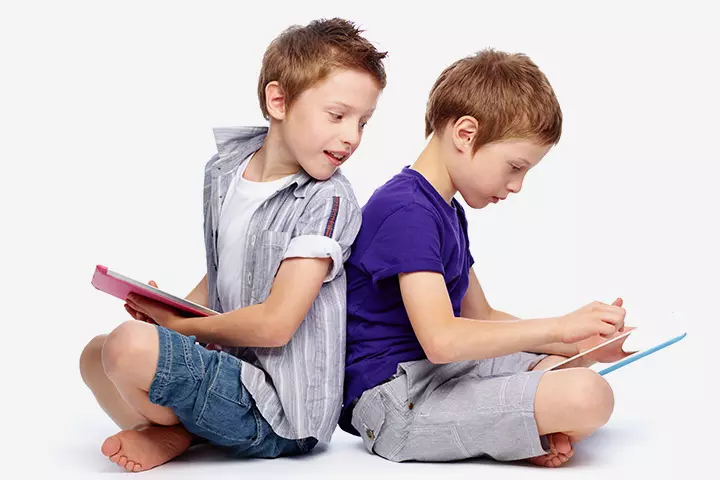
This game is played in pairs and engages a child’s imagination and ability to describe things.
Number of players: Four or more
You will need: Sheets of white paper, pencil, pen or sketch pens, drawings or images
How to play:
- Pair the children, but do not let them face each other.
- Give one child a picture or an image.
- The second child has to recreate the picture while his partner describes it, without revealing what it is.
The idea is to see how accurate the drawing can be, when recreated without seeing.
3. Don’t Answer
When asked a question, the ideal thing to do is answer. But not when you are playing this game, which older kids and teens will enjoy playing.
Number of players: Ten or more
How to play:
- One student starts by asking another student a random question. For example, “What is your one precious possession?”
- But the student who was asked shall not answer. The student standing left to him or her will respond, whether or not they know the answer.
The game gets hilarious when students get imaginative and creative with their answers. ‘Don’t answer’ is ideal for high school students.
4. Crazy Train
Ideal for primary and kindergarten kids, the crazy train is a choo-choo train with added joy and fun.
Number of players: Ten or more
You will need: Space to play
How to play:
- Line up the kids to form a human choo-choo train.
- Then shout-out commands such as ‘slow’, ‘fast’, ‘slow-motion’, ‘turn right’, ‘move backward’, and ‘stop’ randomly to make the train go ‘crazy’!
Younger children will love playing this one as it involves group participation.
 Quick Tip
Quick Tip5. Four Corners
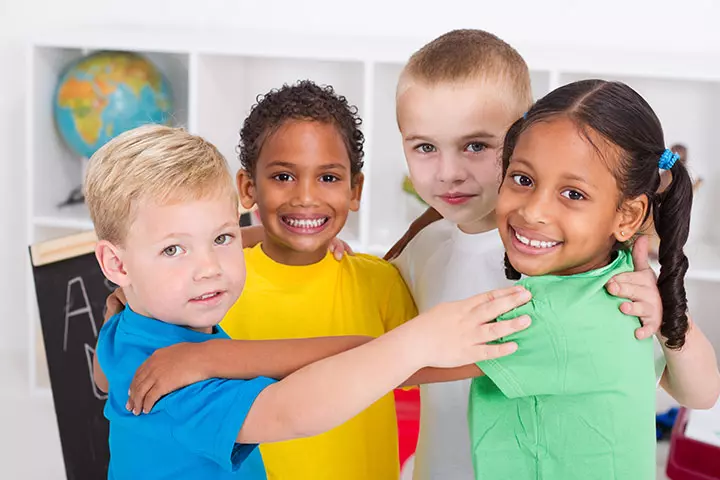
Four corners is a simple game of chance that can energize students and keep them awake after the lunch hour. This activity is among the group games for kids that are guaranteed to bring excitement and squeals of delight.
Becca, a vocalist and music teacher, shares her conversation with one of the Children’s Church teachers about her experience playing the popular “Four Corners” game at her classroom. The church teacher remarks, “No matter what fun, creative games I come up with, the kids just want to play four corners. Four Corners is a super simple, super fun game, and I have adapted it a few ways to work in my elementary music classroom (i).”
Number of players: 12 or more
You will need: A room with four corners and enough space for a group of students to stand
How to play:
- Choose one student to be ‘It’. Blindfold and send ‘It’ out of the classroom for a while.
- Divide the rest of the class into four groups of four students each.
- Ask each group to pick a corner. Name the corners A, B, C, and D.
- Once the students are in place, ‘It’ calls out a corner and all the students standing there are out of the game.
- The four members of the last group standing will pick a corner each and ‘It’ continues to eliminate them all until only one student is left.
6. Bleep
Bleep is a memory game that prevents children from using certain words.
Number of players: Ten or more
You will need: Reading material
How to play:
- Give the students a list of forbidden words. They can be anything such as colors (red, blue, green, and so on), play, of, man, food, apple, the, and more.
- Choose reading comprehension material with these words in it and ask the kids to read one sentence each.
- Kids have to bleep each time they hear a forbidden word.
7. Jumping The Line
This is an energizer that can be played towards the end of the day and is a great game for revising and understanding the day’s lessons.
Number of players: 10-15
You will need: Sticky tape or chalk, set of True/False questions, space to play
How to play:
- Make a straight line using the chalk or tape.
- Mark one side of the line as True and the other as False .Ask the children to stand on the line.
- Ask a question – if the kids think it is true, they jump to the True side. Otherwise, they must jump to the False side.
Kids who make a mistake have to go back and sit.
8. Blindfold Conversation
This game is an interesting way to make children listen and focus on the voice of another person.
Number of players: Ten or more
You will need: Cloth for blindfolding and space to play
How to play:
- Make space in the room and ask kids to form a circle.
- Pick one student to be ‘It’ and blindfold her or him.
- Spin ‘It’ and ask him or her to point. Whoever ‘It’ points at must talk to ‘It’ in a funny voice, without revealing their name.
- ‘It’ has to guess the name of the student by asking a series of questions.
If ‘It’ rightly guesses who the student is, the student becomes ‘It’.
9. Building A Den
Building a den always excites children. They get a small, comfy space where they can chill, read, and have a fun time. This is not a regular game but a fun activity.
Number of players: All the children in a class
You will need: A large bedsheet, chairs, tables, and clips
How to play:
- Choose a corner in the classroom and gather all the building materials there.
- Arrange the chairs and table in a rectangular form to create an enclosed space.
- Drape it with a large blanket, which will act as the roof.
- Secure the blanket with clips.
Hang a board outside the den, saying it is strictly for children and no adults are allowed.
10. Story Circle
As students construct a story together, this cooperative storytelling exercise fosters creativity and improves listening comprehension. It encourages creativity and cooperation. Every chapter advances the development of narrative techniques.
Number of players: 5 or more
You will need: NA
How to play:
- Place pupils in a circle.
- One student uses a sentence to introduce a story.
- To carry on with the story, each student contributes one new sentence.
- Continue telling the story until it comes to an end.
11. Math Bingo
Practicing arithmetic abilities with bingo cards is an entertaining and captivating approach to learning. While making learning fun, it supports the reinforcement of mathematical concepts. As they go through puzzles to finish their bingo cards, students become enthusiastic.
Number of players: 10 or more
You will need: Bingo cards, markers, math problems
How to play:
- Make bingo cards with arithmetic problem solutions.
- Distribute an equal number of math bingo cards to all the students.
- On their cards, students must mark the correct solutions to the problems called out.
- Whoever solves all the math bingo with the right solutions wins.
12. Alphabet Race
Young children can practice alphabetical order with this fast-paced game called Alphabet Race. It promotes letter identification, accuracy, and speed. This engaging and instructive exercise helps students recognize letters.
Number of players: 8 or more
You will need: Alphabet flashcards
How to play:
- Lay out the flashcards on the ground.
- Pupils need to select the cards alphabetically within a fixed duration.
- Whoever finishes the alphabet first is the winner.
13. Simon Says Shapes
Students can learn to recognize shapes while adhering to directions with this spin on the classic Simon Says game. It improves listening comprehension and shape perception. Students stay involved in the game and stay active.
Number of players: 10 or more
You will need: Shape cutouts
How to play:
- Pretend to be Simon and use shape commands for the children to follow.
- Pupils should only comply with instructions that begin with “Simon Says.”
- Pupils who follow the wrong instructions are eliminated.
- Continue until only one student is left.
14. Number Line Jump
With the use of movement, kids can learn number sequences in the active game Number Line Jump. It is a gem among the educational activities for kids that blend learning with enjoyment and exercise. This game aids in the reinforcement of arithmetic ideas and numerical order.
Number of players: 5 or more
You will need: Chalk or tape for the number line
How to play:
- Draw a numerical line across the ground.
- Students should leap to numbers when they are called out.
- Increase difficulty by employing number sequences.
- Students who jump to the wrong number are out.
15. Character Charades
Students act out book characters in this game to improve their comprehension of the characters and the plot. It promotes creativity and the ability to express oneself. Trying to figure out the characters also enhances reading comprehension.
Number of players: 6 or more
You will need: Character cards
How to play:
- Students need to pick a card with a character.
- They have to play the part while people make assumptions.
- For every round, switch up the players.
- Count the number of accurate guesses to find the winner.
- After every round, talk about the story and the characters.
16. Health Session

Create a class health session, helping students learn about basic health assessment through hands-on experience. It initiates the understanding of basic health records to help children learn the correlation between body health measurements and their functioning.
Number of players: Entire class
You will need: Thermometer, weighing scale, measuring tape, electric sphygmomanometer
How to play:
- Set up the instruments.
- Help the students record the temperature, weight, height, and blood pressure of their friends.
- This activity can be done every week to identify body changes.
- Compare the data and present the findings to the class.
17. Time Travel
Make history classes livelier and more memorable by letting the students act out historical events and personalities. It improves contextual comprehension of history. Students are better able to comprehend and remember historical material when events are acted out.
Number of players: 10 or more
You will need: Costumes, props
How to play:
- Assign historical personalities.
- Students investigate the figures they have been given.
- Ask them to play out important moments related to these personalities.
- Other students need to guess the historical personality correctly.
- You can also create a play combining all the historical personalities.
18. Puzzle Assembly
This cooperative activity focuses on large puzzle assembly, which fosters problem-solving and collaboration. It encourages teamwork and attention to detail. Solving problems together promotes perseverance and teamwork.
Number of players: 6 or more
You will need: Large puzzles
How to play:
- Split the class into groups.
- Assign a puzzle set to be assembled by each group.
- Every group collaborates to finish their puzzle.
- Whoever completes their problem first wins.
- For extra rounds, switch up the riddles among the groups.
19. Planting Seeds
Students learn about plant growth in this activity by cultivating their plants. It blends experiential learning with science. Students’ understanding of biology and responsibility is enhanced by tracking and documenting plant growth.
Number of players: Entire class
You will need: Seeds, soil, pots
How to play:
- Ask the students to sow seeds in flower pots.
- Students need to shower the plants with water and attention.
- They should observe and document the plants’ growth regularly.
- Examine the variations in growth rates amongst plants.
- Talk about the results and exchange observations.
20. Space Mission

Students can learn more about the planets and the solar system by simulating a space voyage. It blends role-playing with research. Space facts are entertaining, and this activity can promote fun and learning through participation.
Number of players: 10 or more
You will need: Space-themed props, information sheets
How to play:
- Assign planets to each group.
- Ask the students to compile information on the assigned planets and present it.
- Students can make plans for their missions to investigate the solar system.
- Encourage the class to discuss their findings.
21. Story Starters
This activity involves composing stories in response to prompts to help improve the kids’ writing and creative thinking. It is one of the interesting activities for kids that stimulates creative thought. Also, telling tales to the class fosters public speaking and self-assurance.
Number of players: Entire class
You will need: Prompt cards, paper, pens
How to play:
- Give the class a narrative exercise.
- Students can use the prompt as inspiration for their short tale.
- Students must narrate the story to the class.
- Analyze and comment on every story.
- Turn over the prompts for fresh tales.
22. Mystery Bag
In the sensory game Mystery Bag, students guess objects by feeling them. This improves their descriptive and tactile learning abilities. It piques the interest of the senses. It is an enjoyable and instructive exercise that promotes critical thinking.
Number of players: 4 or more
You will need: Bag, various objects
How to play:
- Put items into a bag.
- Put on blindfolds and let students feel the objects.
- The students have to guess the object inside the bag correctly.
- Whoever guesses correctly gets to see the objects revealed, and wins.
English Or Word Games For Classrooms
Reading and writing aren’t the only activities or tools for learning a language. There are some fun games as well, which can be used to review and improve a child’s problem-solving, vocabulary, grammar, and speaking skills.
23. Dictionary Deception
Playing dictionary deception presents fun challenges to children that involve finding the true meaning of words.
It is a rewarding activity that facilitates the discovery of new words, ultimately enhancing their vocabulary skills.
Number of players: Six or more
You will need: Sheets of paper, pens, and a list of words
How to play:
- Pick a word that none of the students have heard before.
- Write the meaning of the word on a sheet of paper. Ask the students to write down what they think the definition of that word is.
- Collect the sheets and read them out one by one – each time you do, the class has to consider the meaning and vote.
- Students get one point every time their definition gets a vote and also if they have written the right definition.
The student with the highest number of points wins.
Some words you can use include Aplomb, Brackish, Acumen, Chicane, Diffident, Epiphany, Facetious, Fiduciary, Filibuster, Hubris, Incognito, Jejune, Kowtow, Laissez-faire, Lexicon, Nihilism, Nomenclature, Oligarchy, Paradigm, Pecuniary, Quotidian, Sanguine, Soliloquy, Tempestuous, Totalitarian, Unctuous, Usurp, Vortex, Wrought, and Xenophobe.
24. Board Race

Board race is a team-building activity that requires teamwork and also works on the child’s vocabulary.
Number of players: Six or more
You will need: Board and two different colored markers
How to play:
- Divide the class into two teams. Give each team a pen.
- Draw a line in the middle of the board, dividing it into two parts, one each for each team.
- On one side of the board, write down a word.
- Following the relay method, each team must write words relevant to the theme of the keyword.
- The team with the highest number of words for a word scores one point.
 Quick tip
Quick tip25. Chain Spelling
This is like interlinking two unrelated words, based on their spellings.
Number of players: Six or more
How to play:
- Write any word on the board.
- The first student has to take the last four or three letters of that word and form a new word.
- The second student does the same, and the chain continues until a student is unable to form a word.
- The student who fails to form a word or misspells it is out of the game.
Avoid -ing or -ion words. You can increase the complexity of the game by restricting them to a particular theme or topic.
26. The Mime
The mime is a fun game to revise verbs or action words. This game can be played with primary or middle school kids.
Number of players: Ten or more
You will need: A list of action words
How to play:
- Write down a list of action words such as gardening, walking the dog, dish washing, eating, or reading on small pieces of paper. Put them in a bag.
- Divide the class into two teams.
- The student has to enact that word while the other students try to guess what the word is.
- The team that guesses the word correctly gets a point and the team with the maximum points, wins.
27. Sentence Race
Sentence Race is a vocabulary review game that works best with higher classes with the coordination and cooperation of more than ten students.
Number of players: Ten or more
You will need: List of 10 vocabulary words, 20 pieces of paper, pen
How to play:
- Divide the class into two teams.
- Pick ten or more vocabulary words and write each word on two pieces of paper. You will have two bundles of vocabulary words.
- Each team gets a bundle and a marker or chalk.
- Divide the board into two sections, one for each team.
- When you call out a word from the list, one student from each team runs to the board and writes a sentence with the word in it.
The team that writes the maximum correct and meaningful sentences with the chosen words, wins.
28. Word Relay
Students use provided words to make phrases in this vocabulary-building game. It promotes rapid thinking and teamwork. It’s an engaging game that improves language proficiency in an enjoyable method.
Number of players: 10 or more
You will need: Flashcards with words
How to play:
- Split the class into two groups.
- At one end of the room, arrange the flashcards.
- Pupils dash to select a card and utilize the term in a phrase.
- The first team to use every phrase correctly wins.
29. Rhyming Pairs
Through the identification and learning of rhyming words, this matching game enhances students’ phonological awareness. It adds enjoyment and interaction to language learning. Discovering rhymes improves one’s pronunciation and vocabulary.
Number of players: 6 or more
You will need: Word cards
How to play:
- Shuffle the cards and ensure they can’t be seen.
- Students need to uncover the rhymes in pairs by flipping cards in each turn.
- Gather the most pairings to win.
- To maintain the challenge, place the cards face-down after every round.
30. Vocabulary Pictionary

This game makes learning words more interesting by combining vocabulary exercises with sketching. It encourages visual learning and creativity. To reinforce vocabulary, students draw words from cards while others make guesses.
Number of players: 4 or more
You will need: Whiteboard, markers, word cards
How to play:
- One pupil selects a word from a deck of cards.
- Others make guesses based on the illustration.
- A new person should pick the card in each round.
- Count the number of accurate guesses to find out the winner.
Memory Games For Kids
Memory games are fun and they provide a sense of satisfaction. They compel you to try and recall and reinforce any information that the brain has received. Here are a few you can try in the classroom.
31. Card Recall
This memory game involves the use of flashcards to recall something from the short term memory.
Number of players: Ten or more
You will need: Flashcards on chosen subject
How to play:
- Divide the class into pairs and place different sets of flashcards on the table.
- Each student takes three flash cards from the table and counts to ten, as he or she shows it to the partner. He then places them face down.
- The partners have to recall what the three cards are. If they succeed, they get to keep the cards.
The student with the highest number of cards wins the game. This game can also be played at home, with two or more people.
 Quick tip
Quick tip32. I’m Going On A Trip
This is a memory game that involves making lists. Variations of this game can be played by changing ‘on a trip’ to ‘to the market’.
Number of players: Eight or more
How to play:
- Write the statement “I’m going on a trip and bringing __________” on the board.
- Ask the first student to fill in the blank with whatever he or she is bringing. For example, ‘I’m going on a trip and bringing a suitcase’.
- The remaining students repeat the sentence with the list of things mentioned by the other students and also add what they are going to bring on the trip. For example, ‘I’m going on a trip and bringing a suitcase, a hat, a pair of sunglasses and ….’.
- The students must remember the items mentioned by the others. If they miss even one, they are out of the game.
33. What’s Missing?
A simple game that works well with younger children, ‘What’s missing’ helps the children try and recall things they have seen recently.
Number of players: Four or more
You will need: Flashcards
How to play:
- Pick up three to five cards each and show it to the class, for a few seconds.
- Turn the cards away, shuffle them and show only two of the cards. Ask the class what cards are missing.
- You can have two volunteers to show and hold the cards. In that case, you could also ask which card the person was holding before.
Despite being deemed as too simple for higher classes, this game is a good form of enjoyment that exercises their memory.
34. Picture This
Picture This is suitable for students in high school or middle school. It involves paying attention to details.
Number of players: Two or more
You will need: Two or more images with a lot of detail
How to play:
- Pick a couple of pictures from the Internet – have at least three to four images, with at least one image that can be memorized easily.
- Start by showing the simpler image to the class. Let them see it for a couple of minutes and memorize it. Ask them to notice the details carefully.
- Take the image away and ask them questions such as – ‘Was there anything red in the picture?’ or ‘Where was the man with the beard standing in the room’ depending on the image and the details.
Note that the idea is to help children jog their memory to recall something and not pose difficult questions. So pick questions about a few evident details that most kids notice, along with a couple that only a few observant ones do.
35. Science Facts
This is a competitive quiz game that can help reinforce pupils’ understanding of science concepts. It promotes critical thinking and cooperation. Combining learning and entertainment, students will enjoy taking part in the challenge.
Number of players: 6 or more
You will need: Question cards, a score sheet
How to play:
- Form teams out of the class.
- Display quiz questions among the participants.
- Teams respond to the questions in turn.
- Correct responses gain points for teams.
- Whichever team scores the most wins.
36. Sports Trivia
Teams compete to answer questions on sports, creating a pleasant learning environment that fosters critical thinking and memory skills. The quiz game is focused on sports knowledge and encourages learning via friendly competition.
Number of players: 6 or more
You will need: Question cards
How to play:
- Form teams out of the class.
- Ask questions about various sports.
- Teams should respond to the questions in turn.
- Correct responses earn points for teams.
- Whichever team scores the most wins.
37. Music Match
This activity can enhance children’s musical expertise by letting them identify and match the sounds of musical instruments. It promotes recognition and listening abilities. This is an interesting and instructive game.
Number of players: 8 or more
You will need: Instrument pictures, audio clips
How to play:
- Play a sound from an instrument.
- Students need to match the instrument’s picture to its sound.
- Whoever matches every sound accurately wins.
- Change the sounds according to the rounds.
- Talk about each instrument’s tone.
Art Games For Classroom
Children must pay more attention to what they do in an art class. And while they learn how to do that, they can have a little fun too, with these games.
38. Pass The Drawing
Yes, pass the drawing. Not the salt or the butter! This game works with all age groups.
Number of players: Eight or more
You will need: Drawing paper, pencils or sketch pens
How to play:
- Give each student a sheet of paper and a color pen.
- Set the timer to one minute and ask the kids to draw anything they want using their color pen.
- When the timer dings, pass the paper to the next person and continue the drawing on the paper they get.
Pass the sheets around for three or four rounds and see the result. It could be a collaborative masterpiece for all you know.
39. All About Me Hats
With this game, everyone can be a mad hatter. The game encourages creativity using mundane things, or even things considered useless.
Number of players: Five or more
You will need: Hats of different shapes and sizes, stickers, decorative paper and pins, old scraps of fabric
How to play:
- Get as many hats as there are students in the classroom.
- Ask the students to pick a hat.
- Set a timer for 30 minutes and ask them to decorate the hats in a way that best suits them.
They could also spell their names on the hats to wear them to a class party.
40. Art Bingo
Although bingo is commonly associated with cash rewards, art bingo is an exception. This game is entertaining and purely played for fun.
Number of players:
You will need: Letter sized paper, pens or pencils
How to play:
- Give each student a letter-sized sheet of paper. Get them to fold it in half, four times. When they unfold it, they will have 16 blocks.
- They can draw lines along the folds or creases to separate the blocks.
- Create a word bank of 40 words with the help of your students. Number them and write them on the board.
- Ask the students to pick any 16 words from the board and write it at the bottom of each block. They can illustrate the object in the remaining space in the block.
Write numbers one to 40 on slips of paper and put it in a bag. Pick the numbers randomly to play bingo. Students have to mark the corresponding words, and one who marks all the words first wins.
41. The Combination Man Drawing Game
This is an engaging art activity that you can try at beginner level or even advanced art classes. The game works well with kids who can draw human shapes and combine two shapes to form a new one.
Number of players: Six or more
You will need: Papers, color pens or pencils
How to play:
- Each person gets a sheet of paper and pencil.
- The students begin by drawing the head and the neck or a man, an animal, a robot, or even an alien. Fold the paper backward at the neck, such that only the bottom of the neck is visible.
- Pass the paper to the next person, who will draw the torso of any person or creature. They will fold it again at the end of the waistline, and pass it on.
- The last person will draw the legs and the remaining body to complete the combination man.
In the end, unfold the paper to see the resultant picture – we guarantee there will be laughter!
42. Nature Collage
Students can use natural materials to make collages that foster creativity and a love of the natural world. This activity blends environmental education with art. Gathering and organizing materials encourages artistic expression and observational skills.
Number of players: 10 or more
You will need: Leaves, twigs, glue, paper
How to play:
- Gather resources while out on a nature walk.
- Organize and adhere materials to form a collage.
- Present the collages in front of the class and talk about them.
- Encourage students to describe their work.
Benefits Of Classroom Games And Activities For Kids
We often think of play as something kids do for fun outside the classroom, but games can also be used effectively in schools. The following are some benefits of classroom games and activities for kids (1) (2) (3).
- They help children practice language skills and simulate real-life situations through role-play.
- They help improve children’s cognitive and emotional skills.
- They help improve children’s problem-solving skills and boost their confidence.
- They encourage teamwork and collaboration and improve children’s communication and social skills.
- Classroom games for kids allow children to apply what they learn in real-life situations.
- They help students process information and understand concepts better.
- They enable students to share ideas, exchange information, and solve problems, thus making the learning experience more interactive.
Frequently Asked Questions
1. What are the potential risks of using games in the classroom?
Poor planning of classroom games may increase the risk of injuries due to a lack of safety measures and increased disruptive behavior among children due to a lack of clear rules. Adequate planning and the right set of instructions can prevent such problems and allow children to enjoy these games.
2. How do you address concerns about the potential for games to perpetuate harmful stereotypes or biases?
Choosing culturally and age-appropriate games, being mindful of the gaming messages or content, encouraging critical thinking in children, and educating children on how to differentiate stereotypes by looking at the game through diverse perspectives can help address the concerns about the potential for games to perpetuate biases.
3. How can I adapt classic games like Simon Says or Pictionary to make them more interactive for the classroom setting?
Adapting classic games like Simon Says or Pictionary for the classroom can make them more engaging and interactive for students. Instead of the traditional commands in Simon Says, modify the game to incorporate academic content. Divide the class into teams and have each team take turns being “Simon”. It will encourage collaboration and teamwork. For pictionary, create word cards or a word bank specific to the subject you are teaching. Students can take turns drawing the words related to the topic, and their classmates have to guess it.
4. What are some fun and interactive games that can be used to teach science concepts to young children?
Teaching science concepts to young children can be fun and informative with the help of educational games. Create a game where children have to arrange the planets in order, learn their names, and identify their distinguishing features. Take children on a nature walk and give them a list of items to find, such as various rocks, leaves, or insects. This game encourages observation skills and teaches children about the natural world. You can also create a bingo game with pictures or words representing different scientific concepts.
5. How can I modify popular board games like Monopoly or Scrabble to make them more educational for the classroom?
Modifying popular board games like Monopoly or Scrabble to make them more educational for the classroom can be a fun and effective way to engage students while promoting learning. Replace the traditional properties of Monopoly with subjects related to the curriculum, such as historical events, famous scientists, literary works, or geographic locations. For Scrabble, encourage students to use more advanced vocabulary by allowing them to use dictionaries or word lists during the game. It can help them discover new words and enhance their language skills.
These classroom games for kids not only provide a fun and engaging way to learn but also promote socializing and exploration. By playing games with their peers, children can form strong bonds and better understand each other’s personalities. The motivation and enthusiasm that these learning school activities for kids generate can lead to increased application and practice of the concepts learned in class. Repetition through play can also lead to a higher chance of success and achievement, which can boost confidence, self-esteem, and pride in their accomplishments. It’s important to plan these games well and incorporate them into the regular class schedules wisely to ensure that they are viewed as fun learning experiences and not as distractions.
All work and no play make Jake a dull boy. Similarly, hours of lectures can bore kids too. Here are some fun classroom games to stimulate the children.
Personal Experience: Source
MomJunction articles include first-hand experiences to provide you with better insights through real-life narratives. Here are the sources of personal accounts referenced in this article.
i. Exciting and effective ways to play four corners from 6 feet away or virtual (in music class!)https://beccasmusicroom.com/four-corners-distance/
References
- Manar S Alotaibi; (2025); Game-based learning in early childhood education: a systematic review and meta-analysis.
https://pmc.ncbi.nlm.nih.gov/articles/PMC11018941/ - Adipat, S. et al.; (2025); Engaging Students in the Learning Process with Game-Based Learning: The Fundamental Concepts.
https://files.eric.ed.gov/fulltext/EJ1311472.pdf - Kids are here to play – the importance of games.
https://www.cambridgeenglish.org/learning-english/parents-and-children/your-childs-interests/kids-are-here-to-play-the-importance-of-games/
Community Experiences
Join the conversation and become a part of our nurturing community! Share your stories, experiences, and insights to connect with fellow parents.
Read full bio of Kristen Miller
Read full bio of Harshita Makvana
Read full bio of Deepa Thomas
Read full bio of Trisha Chakraborty







